The need to transport various kinds of goods has affected the increase in oversized cargo transportation. In such situations, in addition to using an appropriate vehicle capable of carrying bulky cargo, many other factors must be taken into account. They are regulated by regulatory documents. Including traffic rules.
Oversized cargo: definition
This term refers to a vehicle (with or without cargo) that exceeds in its overall dimensions the values established by regulatory documents. So, the transport affinity should not exceed 20 m in length, 2.55 m in width, and 4 m in height. With these dimensions, the total weight of the vehicle and cargo should not exceed 38 tons.
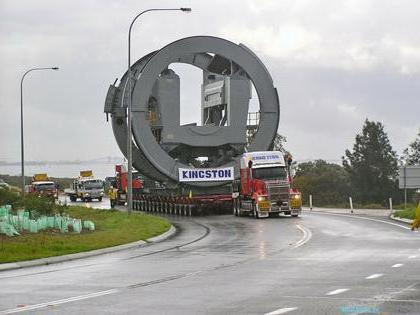
It is clear that a lighter and smaller cargo is easier to transport, and therefore cheaper. Therefore, the transportation of bulky goods is considered simpler if the dimensions are in the following limits: a length of no more than 2 m protrudes beyond the edges of the transport, a width of up to 3.5 m, a height of up to 4.5 m.
Oversized cargo difference
There are several concepts that define large and heavy loads. To an uninformed person it is easy to get confused. So, a more general concept is “oversized cargo”. It is also sometimes called non-standard.
Speaking in a simpler and more understandable language, an oversized load is a heavy or bulky item (sometimes both) that cannot be transported in the usual way in a container or in a closed vehicle. An example of such cargo can be agricultural machinery, drilling equipment, transformers, and so on.
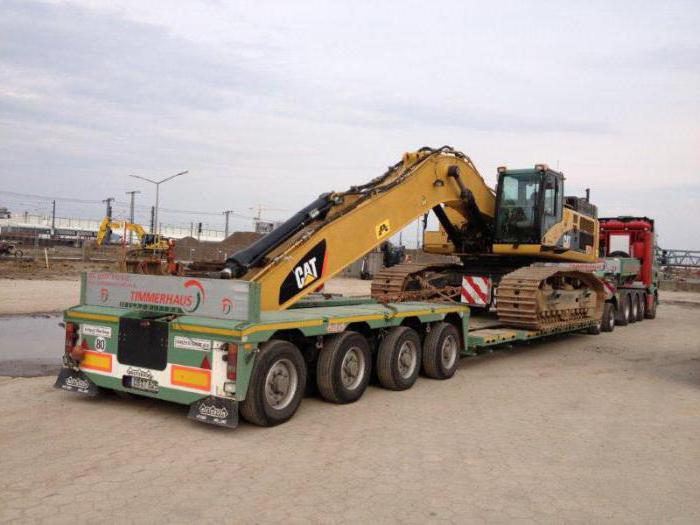
Due to the wide variety of types of oversized cargo, the need for classification arose. They are divided into the following types:
- Heavy, which, after loading onto a vehicle, causes excess of permissible parameters in terms of weight or axle load.
- Oversized cargo, which causes excess values of the overall dimensions of vehicles.
- Long, which, after loading onto an automobile train, protrudes beyond its rear side by more than 2 meters.
Bulky and heavy cargo is difficult and very expensive to transport by air and rail. Therefore, most often use road transport.
Regulations
Bulk cargo transportation should be carried out in accordance with the developed regulatory documents. This need is spelled out in the Civil Code of our country. Cargo transportation using road transport (both passenger and freight) should be carried out in accordance with the following documentation:
- Decree of the Government of the Russian Federation of 2011 No. 272, which describes the rules for the carriage of goods by road.
- The charter of automobile and city (which moves on the ground and consumes electricity as fuel) transport. This Charter was approved by the Federal Law in 2007 under No. 259.
- Instruction of the Ministry of Transport adopted in 1996 (as amended and supplemented by Order of 2012 No. 258). It affects the rules for the transportation of bulky goods on the roads of only our country.
- Government Decree of 1993 No. 1090, which relates to the rules of the road.
In addition to the above, there are other legislative documents.Depending on the specific characteristics of the cargo (flammable, perishable, explosive and others), other standards must be taken into account. In addition, we must not forget about international agreements (and treaties).

General requirements for transportation
The requirements described in the transport documentation, which affect the overall dimensions and weight of the transported goods, relate to the vehicle and cargo. In accordance with the legislation of our country, you must have permission to transport bulky cargo. Without this document shipping is prohibited.
In the case of complex cargo escort is provided. Cover can provide a car equipped with flashing lights. The cargo is escorted by the traffic police after the conclusion of the contract. Such cooperation allows you to protect yourself and the transported goods.
Transportation of goods with non-standard indicators is associated with the solution of a large number of complex issues (from obtaining permission and ending with the accompaniment of a traffic police car). Therefore, it is best to contact a specialist for the correct design of this process.
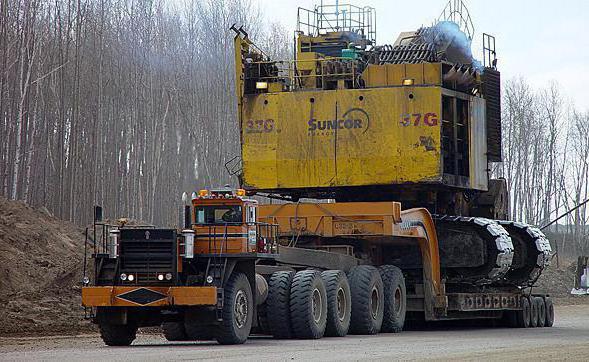
Driving directions
State authorities make sure that bulky cargo is transported correctly. The definition of the supervisory authority depends on the route of cargo delivery.
There are several categories of transportation routes:
- Local. In this case, the supervisory authority will be the organization that manages local roads. The place where the carrier’s vehicles are located is selected.
- Regional Control over these types of transportation will be carried out by the federal highway management body, which is closest to the place where transportation began.
- International Permission in such a situation is issued by the Federal Highway Service of the country.
You can obtain permission for transportation by contacting the regulatory authority.
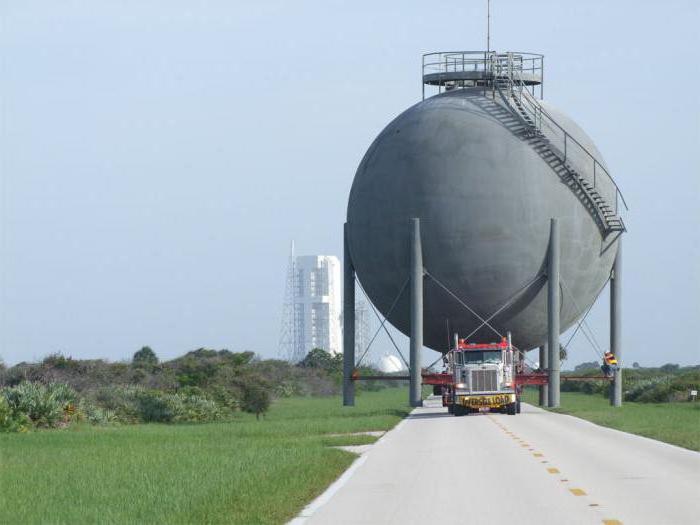
Possible transportation
Bulky and heavy cargo can only be transported if the following conditions are met:
- The cargo placed does not limit the driver's visibility.
- The load does not interfere with driving and stability on the vehicle road.
- The cargo does not block light and lighting devices, an identification mark.
- Oversized cargo does not prevent the driver from perceiving signals, signs and traffic conditions in general.
- The load does not create excessive noise, does not damage the roadway, does not clog it.
If at least one of the conditions is not met, cargo transportation is prohibited. It is permitted only after measures have been taken to eliminate the violations.
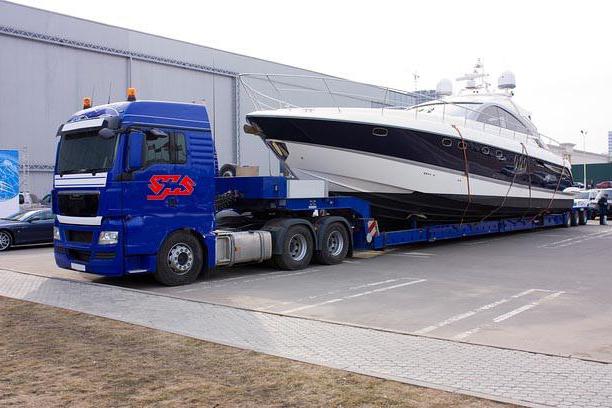
Transportation rules
Oversized cargo must be marked. If he stands for the dimensions of the car 1 m front and rear, 0.4 m on the sides, the corresponding sign “Oversized cargo” is installed on it.
Transportation of goods in the dark is carried out using flashlights or reflective elements. This element is installed on the front in white, and red in the back.
Compliance with traffic rules
First of all, it is necessary to observe the speed limit. When driving on roads, the speed should not exceed 60 km / h. On bridges, the speed drops to 15 km / h. In order to ensure safety, the driver must comply with this speed limit. He is also prohibited from driving on roads other than a given route, to move in icy conditions or in poor visibility (less than 100 m).
Road traffic is also prohibited. The driver can stop only in places designated for this next to the road. In the event of a vehicle malfunction, the driver must stop driving. He must do the same in case of violation of cargo securing.
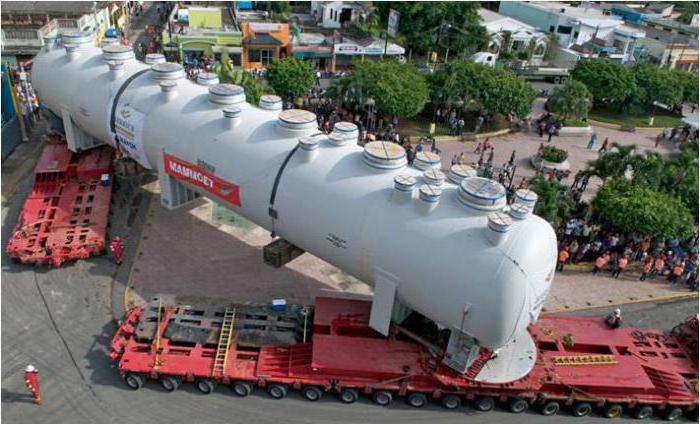
Cargo transportation
Bulky cargo can be transported subject to the following procedures.
For transportation, you must obtain a special permit in advance from the regulatory authority. An application for its issuance is considered by an authorized person within 3-4 days. This period may be extended up to 30 days if transportation is possible only after a change in the original design.
The supervisory authority may not issue the required permit. This is possible if:
- Oversized cargo can be disassembled into individual parts of standard sizes.
- It is not possible to ensure safety during transport.
- It is possible to transport cargo in a safer way (for example, by plane or by rail).
In some situations, support must be provided. Such cases include:
- The width of the car with a load of more than 4 m.
- Length exceeds 30 m.
- The carrier occupies some part of the oncoming lane.
- In the event of a change in transportation conditions in order to comply with traffic safety.
The accompanying car must meet the requirements for it, ensuring traffic safety. It should be equipped with orange flashing lights. He must move at a distance established by the SDA from a truck (or car) that carries oversized cargo.